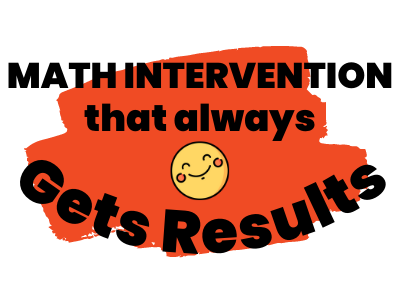Mathematics For All: Supporting Different Learning Student Profiles
Who Do We Serve at Made for Math
We are teachers who provide specialized multisensory math intervention to students with dyslexia, dyscalculia, autism, ADHD, and more. We’re tired of the “one-size-fits-all” attitude toward education and our goal is to provide a fun and safe space for children to learn at their own pace.
In this blog post, we will discuss the types of student profiles we encounter at Made for Math and how they each impact mathematics.
Dyslexia
Dyslexia, a neurodevelopmental condition, impacts a student’s ability to read, write, and spell. Language deficits are common, including difficulties in finding the right words and comprehending vocabulary, particularly evident when tackling word problems in mathematics.
To address these challenges, we advocate for explicit instruction. This can look like incorporating vocabulary instruction that emphasizes morphology, or breaking down word parts to understand their meanings.
In addition to explicit language, graphic organizers play a vital role in providing visual support and structure.
Rhythm and music are also valuable tools, as students with dyslexia often thrive in movement-based learning environments. Consistent use of rhythmic activities fosters engagement and aids in mathematical concept retention.
Counting exercises may present hurdles for students with dyslexia, but incorporating tactile elements like beanbags can help reinforce counting skills, including forward and backward counting and skip counting. Gross motor activities further enhance learning by engaging the entire body, effectively linking visual, auditory, and kinesthetic elements to mathematical concepts.
When tackling word problems, a step-by-step approach is key. By visualizing the problem one sentence at a time and creating simple diagrams to illustrate the scenario, students can better comprehend the problem’s context. Pausing at punctuation marks prompts students to predict the forthcoming question, enhancing their problem-solving skills.
Schema-based instruction, such as Conceptual Model-Based Problem Solving or COMPS, aids in building foundational skills and bridges the gap to algebraic thinking. By connecting previous learning experiences with new concepts, students develop a deeper understanding of mathematical principles.
Students with dyslexia often struggle with recalling math facts rather than finding the right words. However, difficulty with math facts doesn’t indicate a lack of mathematical ability.
To assist these students, simultaneous processing with the CRA (Concrete-Representational-Abstract) Method is recommended. This approach enables students to map subitized quantities onto numerals and symbols through building and drawing. Encourage students to verbalize their actions while engaging in these activities to foster internal dialogue.
For example, breaking down 243 into its components of two hundreds, four tens, and three ones. The student touches and says the quantities and then tells us the name of the quantity.
It’s also beneficial to use selected facts, or focus facts with students with dyslexia. We want to narrow down which math facts are being used in sessions to help with their working memory.
For example, choose two to three new math facts and related operations plus previously mastered facts. Use representations that will be easily retrievable if word fact retrieval fails, and then games to build Math Fact Fluency. Timing and retrieval activities are good for memory, but so many of our kids have been burned by timing. From being done poorly in the classroom, at home with flashcards, or even in the mad minute. Games can lower the stakes and add interest. Plus games make math fact instruction feel relevant and interesting. However, games should still be tailored to focus facts and need to move quickly.
Play Made for Math’s FREE online Math Games Here!
Students with dyslexia may work slowly due to weakened rapid automatic naming and a struggling working memory. To support these students, consider providing shortened assignments, reducing speeds on rapid automatic naming tasks, and offering near-point references such as physical manipulatives or graphic organizers.
Pro Tip!
Minimize teacher talk to reduce cognitive load and allow uninterrupted thinking and problem-solving.
Despite challenges, students with dyslexia often possess strong visual skills and math reasoning abilities. Leveraging these strengths, such as using subitize representations in CRA instruction, can help students develop visual and numerical understanding. Encourage students to use their math reasoning skills to evaluate answers and catch mistakes stemming from word retrieval difficulties.
Remember, even great mathematicians make mistakes, but they learn to check their work.
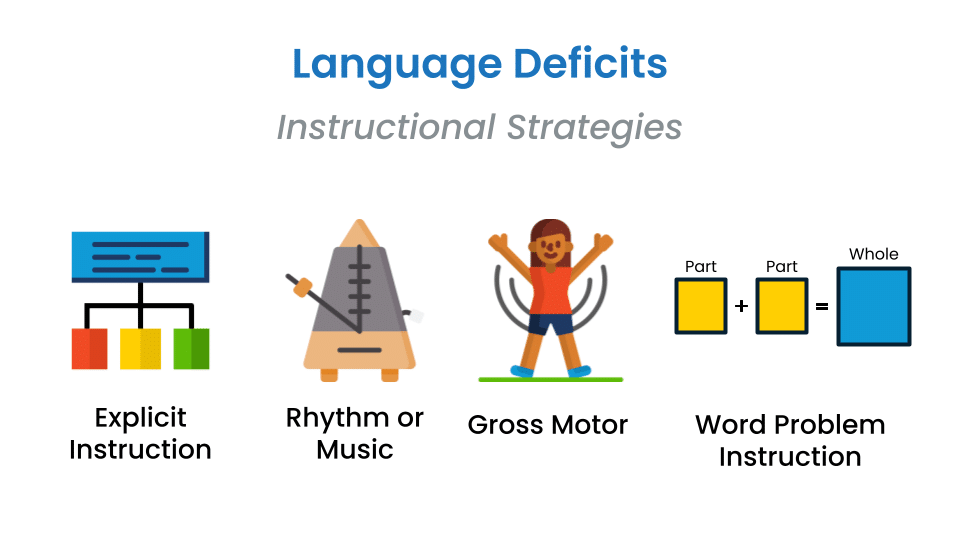
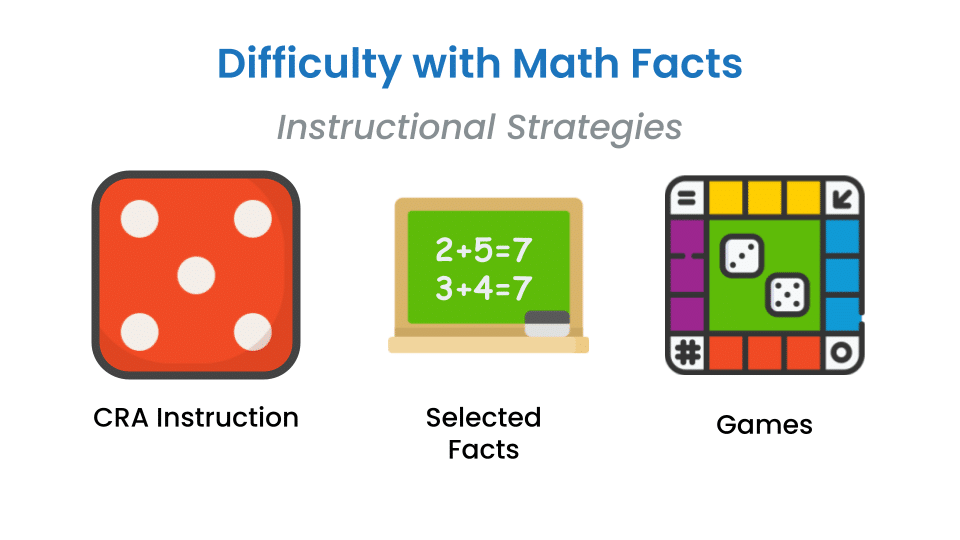
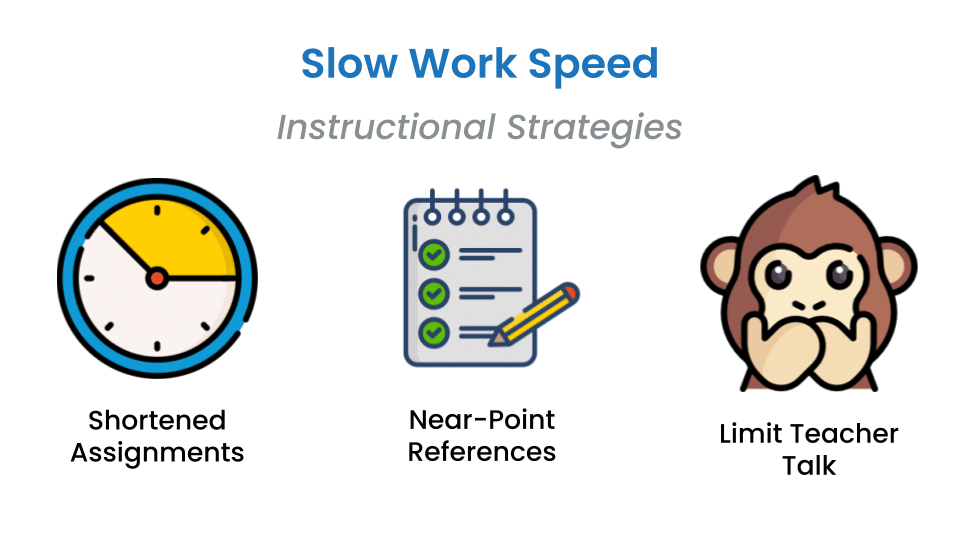
Dyscalculia
Dyscalculia, a learning disability characterized by difficulties in understanding quantity and mathematical symbols, can significantly impact a student’s mathematical abilities.
Students with dyscalculia may struggle with one-to-one correspondence and comprehending written symbols in relation to quantities. For example, they may have difficulty determining how many things are needed for a task, like setting the table for dinner and not bringing enough forks for everybody.
Many of the remediation strategies suggested for dyslexic students are also applicable for dyscalculic students, albeit for different reasons. While dyslexic students may struggle with mapping language to quantity, dyscalculic students may have stronger language skills but struggle with understanding mathematical language due to difficulties with quantity and symbols.
To support students with dyscalculia, it is recommended to use simultaneous processing with the Concrete-Representational-Abstract Method (CRA Method). Just like with dyslexia, this involves building and drawing to map quantities onto numerals and mathematical symbols. Touch and say, but be even more explicit with beginning number composition, place value number lines, and focus on smaller increments of new information with extra practice of each skill before moving on because you are building the understanding of quantity.
For example, you may need to spend time practicing all the ways to compose and represent numbers that are four or less because these students may not have the ability to subitize even these small quantities. To help with this, refer to our book, Math Facts to Memory Vol 1.
Selected facts and related operations, along with representations and games, can help reinforce understanding and fluency with mathematical concepts.
Of course, remember that the goal of a game is to practice the skills and strategies in a low stake environment.
Similar to dyslexia, we see students with slow working speed due to their lack of numeracy, processing speed, and working memory and extensive gaps in semantic knowledge. Watching these students process can feel as slow as dial-up and as severe as communicating through Morse Code.
Shortened assignments and near-point references are recommended for these students as well. These strategies help alleviate the cognitive load on working memory, facilitating better comprehension and retention.
While research has sought to identify specific strengths associated with dyscalculia, findings have been inconclusive, likely due to the broad definitions of the condition. However, this doesn’t negate the presence of strengths in dyscalculic students; rather, it highlights the diverse nature of their abilities, which may develop over time.
It’s essential for educators to consider the possibility of comorbidities like dyslexia alongside dyscalculia when students exhibit significant academic challenges. If a student has both, you’ll see stronger deficits in semantics, how the numbers work, and mental representations of numbers. You’ll want to spend more time with the concrete and explicit instruction and make sure that you give tons of thinking time without that teacher talk. This is crucial.
By recognizing and addressing these overlapping learning differences, educators can provide more targeted and effective support to help students thrive academically.
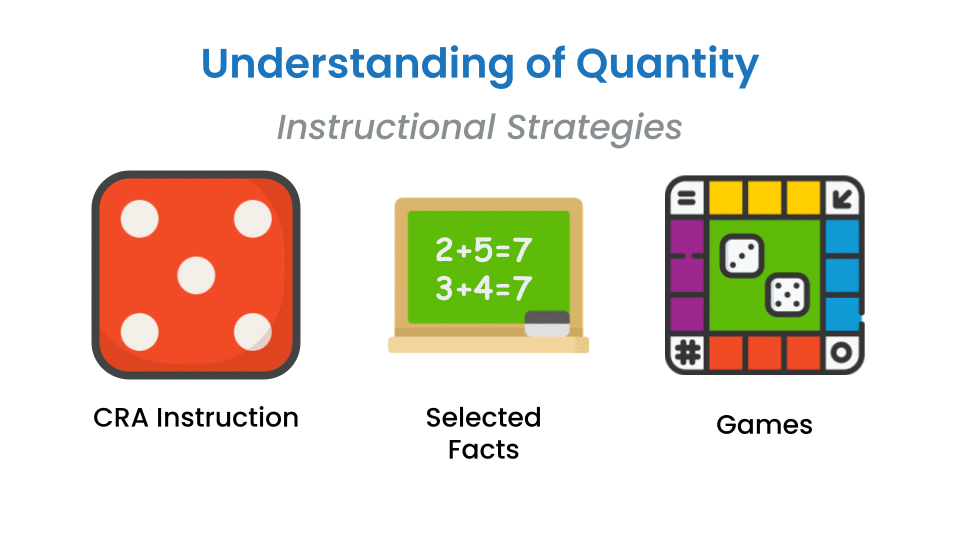
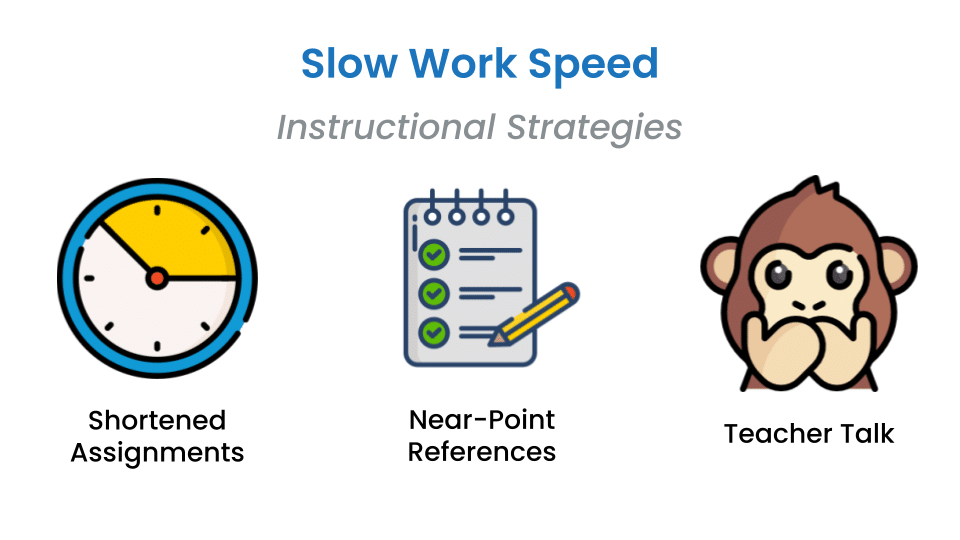
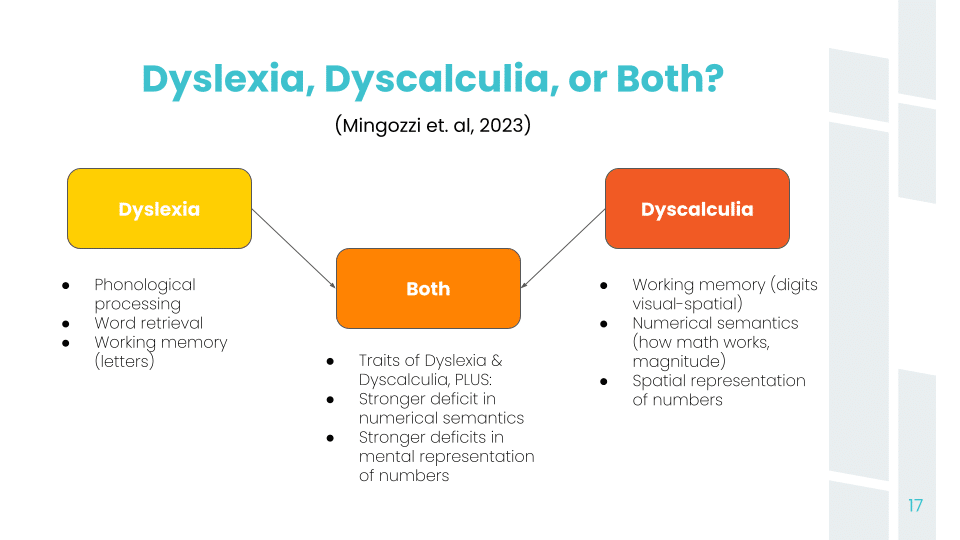
Attentional Issues and Executive Function
Attentional issues and executive functioning refer to a student’s ability to sustain attention and store information in a way that is accessible for future retrieval.
As all learning begins with attention, it’s crucial to ensure that students are focused on math concepts and vocabulary to encode information effectively into the brain.
Simultaneous processing with the CRA Method is recommended to help students catch on to patterns and map them onto numerals. (Are you sensing a pattern?) Utilizing touch-and-say and write-and-say techniques can further enhance learning retention.
To aid students with attentional issues, it’s important to minimize distractions in the learning environment, both visually and verbally. Cut the Clutter! Manipulatives should be used purposefully and put away when not in use to prevent them from becoming distracting.
Furthermore, when creating learning materials, such as homework sheets or whiteboard assignments, simplicity is key. Limiting the number of problems per page, using large font sizes, and providing ample white space can enhance readability and reduce cognitive load. A clutter-free workspace, both for students and teachers, is essential for maintaining focus and minimizing distractions. These strategies also help with dysgraphia.
Direct instruction on how to use manipulatives effectively is crucial, and digital manipulatives should only be used if physical ones are ineffective for the specific student.
Research shows that even though physical or digital manipulatives work equally well for learning, physical manipulatives lead to better retention over time, especially in our students with math difficulties.
If needed, set aside one to two minutes at the end for play as a reward to reinforce learning and engagement!
Tailoring instructional pacing to suit students’ processing speeds, whether rapid or slow, allows for optimal engagement and comprehension. Additionally, providing clear, focused instruction and minimizing unnecessary transitions between software applications can help sustain attention and support planning skills.
Modeling Skills
We need to model these things for our students and scaffold the skills by providing those near-point references. Many graphic organizers have buttons that are not only for memory support, but also aid a student in planning and organizing the steps to a problem over time.
Color coding is another effective strategy, particularly beneficial for middle and high school students. For instance, using yellow and red for integers or employing different shapes like circles, diamonds, and squares can help identify terms in expressions or equations and assist in their combination.
For younger students, a chant rhyme like “Check the sign, follow the line, and this is where we begin” can aid in multidigit addition and subtraction.
Additionally, modeling the process of checking answers and explicitly teaching students how to identify and rectify common errors is essential. Encouraging students to personalize their tools by adding reminders for frequent mistakes on their own pages further enhances their self-monitoring and error-correction skills.
These strategies not only support students with executive functioning difficulties but also foster independence and awareness in their learning journey.
People with ADHD are often creative and enthusiastic. They’re gifted at communication and at avoiding work. Our students keep us thoroughly amazed and entertained!
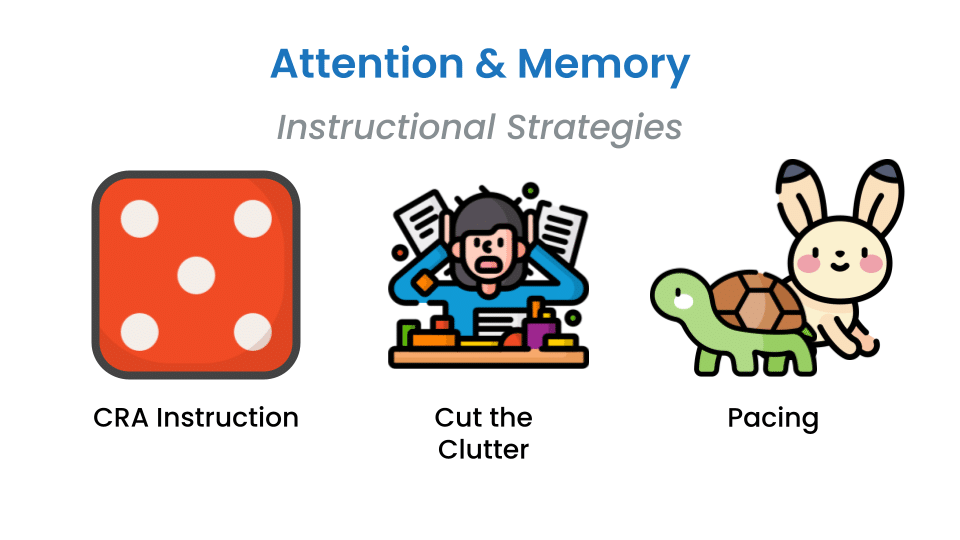
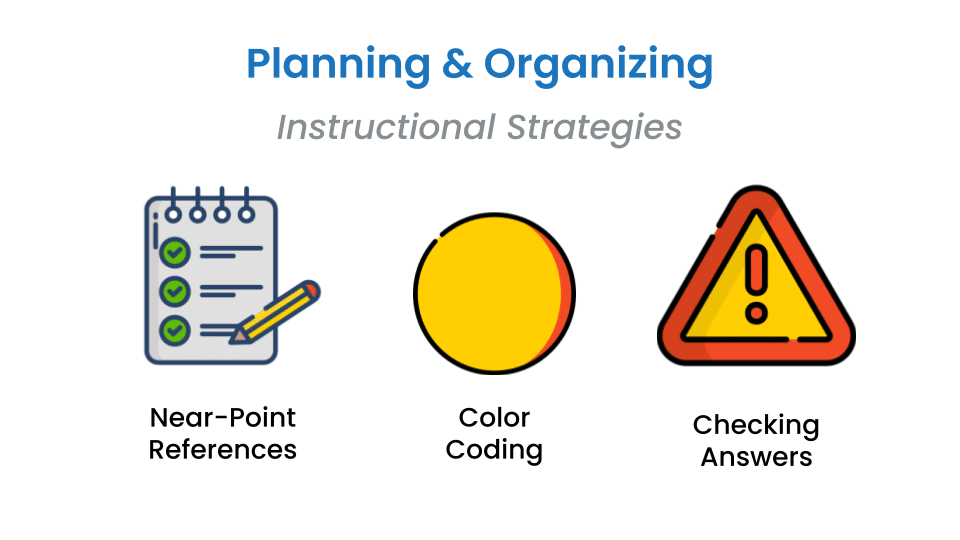
Autism
These students may approach math in unique ways, exhibiting rigidity in their approaches and struggling to generalize information or problem-solving methods.
The CRA Method is beneficial, providing a structured framework for students to understand algorithms and different representations of operations. (Pattens, anyone?)
During CRA instruction, teachers can help students generalize how algorithms can help us solve many different representations of the same operation.
For example, the student who didn’t know that five could mean five fingers, five on a dye, five tallies, or five jumps on a number line. Or the student that could solve multiplication when they were playing the bump game but didn’t think they could solve the same problem in a test. These students can be prone to using their pattern recognition strengths to solve algorithms without knowing the meaning behind them.
Accurate mathematical language is huge– try to avoid harmful or ambiguous phrases that may be taken literally by students with autism.
Additionally, the importance of multisensory lesson plans can not be understated. Providing a structured and predictable learning environment for students with autism is key.
We also want to show students how to generalize. Making sure students are explicitly taught the applications of an algorithm and the connection to different representations, story problems, different forms of an algorithm such as vertical or horizontal, and different uses and meanings for vocabulary.
You might also want to explain the WHY behind using certain methods and the benefits of each. These students may want to keep solving in a certain way with certain manipulatives and see no reason to switch to representational or an algorithm. You need to explicitly explain the purpose for doing so.
You might have a student with autism that struggles with sensory information. They may be seeking a sensory experience or avoiding one. Some students may dislike working with clay because of they way it feels in their fingers, others might prefer the texture and seek the sensory input to help them learn.
They might also struggle with filtering out noise and focusing on the person who is speaking. To help these students it might be best to offer a choice in manipulatives, provide sensory tools like headphones, and reduce visual clutter to prevent overstimulation.
Pro tip!
Those near point visual references can also help these students that have auditory processing issues or verbal reasoning.
Many of our autistic students have a special interest in what they are passionate about. Theming your lessons and games around these areas keeps students engaged and lets them feel more successful when they’re working on a topic that’s familiar and rewarding to them.
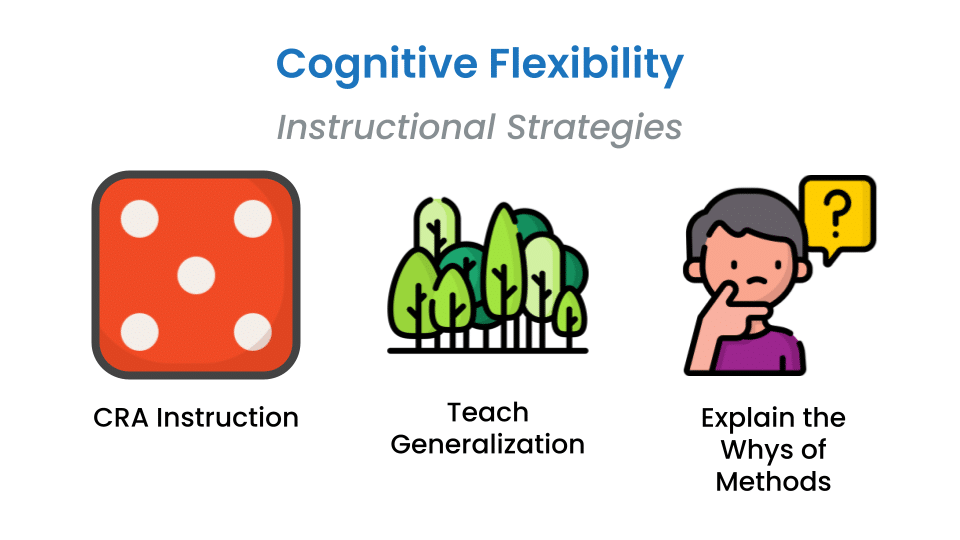
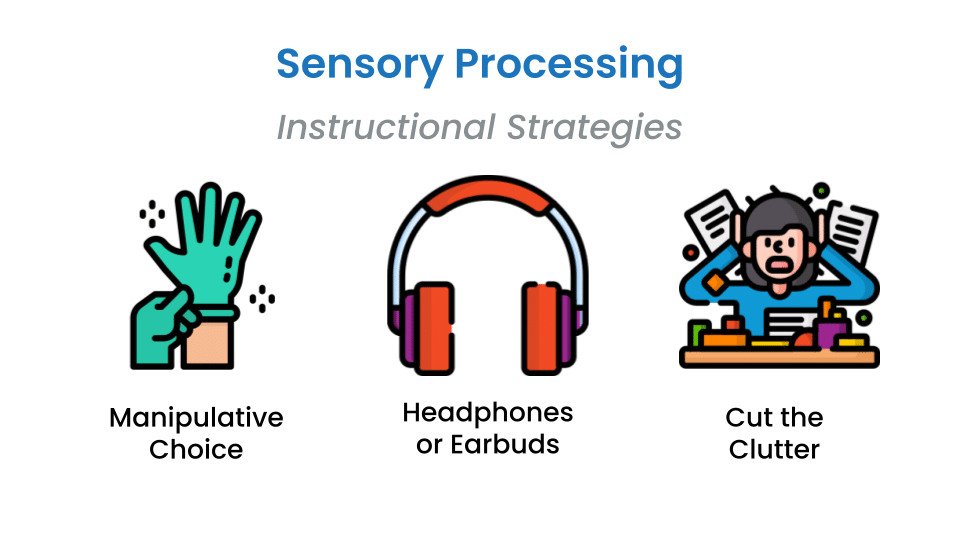
Remember, multisensory math is good instruction for all students, but it is essential for the learning profiles we serve here at Made for Math.
Multisensory Math Is Fundamentally Different
Check Out our Solo Lessons to See How
We are teachers who provide specialized multisensory math intervention to students with dyslexia, dyscalculia, autism, ADHD, and more. We’re tired of the “one-size-fits-all” attitude toward education and our goal is to provide a fun and safe space for children to learn at their own pace.
What are we offering?
- Customized Learning for your child
- One-to-one sessions
- 25 or 55 minute sessions
- Recordings of each session so you can see your child interacting with the method
- All multisensory math materials mailed to your home
- No contract, cancel anytime
- A FUN environment where your child can thrive
Multisensory Math is appropriate for all learners but is essential for those with dyslexia and dyscalculia.
Is multisensory math right for you and your family?
MFM Authors

Jennie Miller
Marketing Assistant
is our Marketing Assistant and content creator here at Made for Math. Jennie loves being part of a company that is working to make mathematics accessible to children with dyscalculia.

